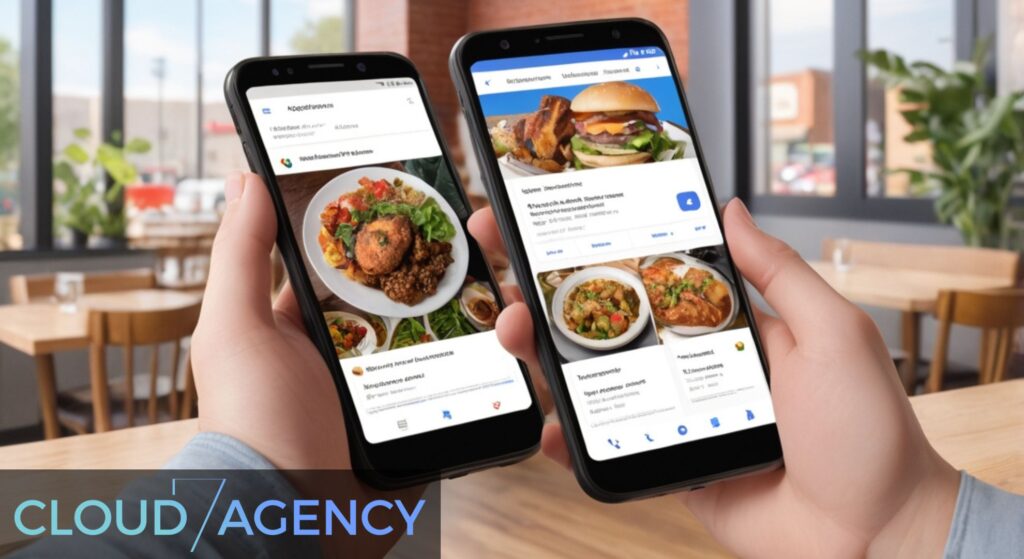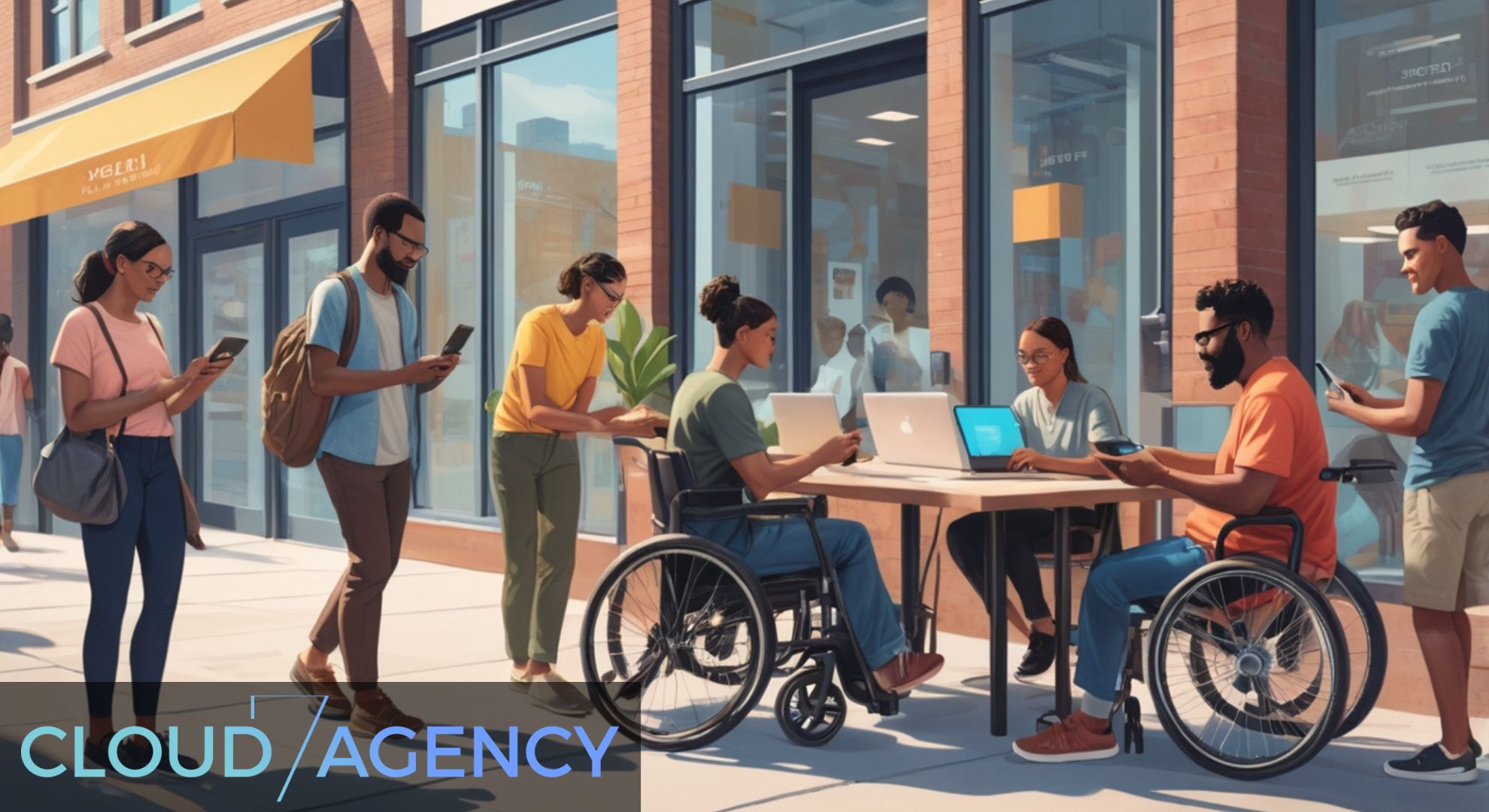In today’s digital landscape, local businesses must ensure their online presence is accessible to all potential customers, regardless of their abilities or the technologies they use. Local SEO accessibility represents a critical intersection where search engine optimization meets inclusive design principles, creating opportunities for businesses to reach broader audiences while building more equitable digital experiences.
When we consider that over one billion people worldwide live with some form of disability, the importance of making local business information discoverable and usable for all users becomes clear. This isn’t just about compliance with accessibility standards—it’s about recognizing that accessible design benefits everyone and can significantly impact a business’s local search performance and customer reach.
Local SEO accessibility encompasses everything from ensuring screen readers can properly navigate business listings to making sure location information is clearly presented for users with cognitive disabilities. It involves optimizing Google My Business profiles with descriptive text, creating website content that works with assistive technologies, and implementing structured data that helps search engines understand and present business information in accessible formats.
The relationship between accessibility and local SEO is symbiotic. Search engines increasingly prioritize user experience signals, and accessible websites typically provide better user experiences for all visitors. When businesses implement inclusive design principles in their local SEO strategies, they often see improvements in search rankings, increased engagement metrics, and expanded customer bases.
Moreover, accessible local SEO practices align with search engines’ goals of providing relevant, useful information to all users. Features like descriptive alt text for images, clear heading structures, and semantic markup not only help assistive technologies but also provide search engines with better context about business content and services.
Key Takeaways
Universal Benefit: Accessible local SEO practices improve user experience for all customers, not just those with disabilities, leading to better engagement metrics and search performance.
Search Engine Alignment: Inclusive design principles often align with search engine ranking factors, as both prioritize clear, well-structured, and user-friendly content.
Expanded Market Reach: Implementing accessibility features in local SEO strategies opens businesses to a significant customer segment that represents substantial purchasing power.
Technical Implementation: Key accessibility features include proper heading structures, descriptive alt text, keyboard navigation support, and semantic HTML markup in local business websites.
Google My Business Optimization: Accessible GMB profiles feature comprehensive descriptions, accurate categorization, and detailed attribute information that serves both search engines and assistive technologies.
Voice Search Compatibility: Accessible content often performs better in voice search results, which are increasingly important for local discovery.
Mobile Accessibility: Local searches predominantly occur on mobile devices, making mobile accessibility crucial for local SEO success.
Continuous Improvement: Accessibility in local SEO requires ongoing monitoring, testing, and refinement to maintain effectiveness across different technologies and user needs.
Understanding Local SEO Accessibility Fundamentals
Local SEO accessibility begins with understanding how different users discover and interact with local business information online. Traditional local SEO focuses on helping businesses appear in location-based searches, but accessible local SEO ensures that when businesses do appear in search results, all users can effectively access and use that information.

The foundation of accessible local SEO lies in recognizing the diverse ways people search for and consume local business information. Some users rely on screen readers to navigate search results and business websites, while others may use voice commands due to motor disabilities. Visual impairments might require high contrast displays or screen magnification, and cognitive disabilities may necessitate clear, simple language and consistent navigation patterns.
Search engines have evolved to better understand and serve these diverse user needs. Google’s algorithm increasingly considers user experience signals, including page loading speed, mobile responsiveness, and content accessibility. When local businesses implement inclusive design principles, they’re not only serving users with disabilities but also aligning with search engine preferences for high-quality, user-focused content.
The technical aspects of accessible local SEO involve implementing proper HTML structure, using semantic markup, and ensuring that all interactive elements can be accessed via keyboard navigation. This includes everything from contact forms and location maps to image galleries and service descriptions. When these elements are properly coded with accessibility in mind, they become more readable by both assistive technologies and search engine crawlers.
Optimizing Google My Business for Inclusive Design
Google My Business profiles serve as the cornerstone of local SEO, and optimizing these profiles with accessibility in mind creates a more inclusive discovery experience. The key lies in providing comprehensive, descriptive information that serves both search algorithms and assistive technologies effectively.
Business descriptions should go beyond basic keyword optimization to include detailed information about accessibility features, services, and physical characteristics of the location. Instead of simply stating “downtown restaurant,” an accessible description might read “family-friendly Italian restaurant located on the ground floor with wheelchair-accessible entrance, featuring traditional pasta dishes and accommodating various dietary restrictions.”
Category selection and attributes play crucial roles in accessible local SEO. Google My Business offers specific accessibility-related attributes such as “wheelchair accessible entrance,” “wheelchair accessible parking,” and “wheelchair accessible restroom.” Accurately selecting these attributes helps users with mobility needs find appropriate businesses while also providing search engines with structured data about accessibility features.
Photo optimization within Google My Business profiles requires special attention to alt text and descriptive captions. While Google My Business doesn’t allow direct alt text editing, businesses can ensure their uploaded images are clearly labeled and include descriptive filenames. Additionally, using photos that showcase accessibility features—such as ramps, wide doorways, or accessible parking spaces—provides visual confirmation of accessibility claims.
The Q&A section of Google My Business profiles presents an excellent opportunity to address accessibility-related questions proactively. Businesses can anticipate common accessibility inquiries and provide detailed answers about parking availability, entrance accessibility, service animal policies, and accommodation options. This proactive approach not only serves users with disabilities but also demonstrates the business’s commitment to inclusive service.
Website Architecture and Technical Implementation
The technical foundation of accessible local SEO requires careful attention to website architecture, ensuring that local business websites can be effectively navigated by both search engine crawlers and assistive technologies. This involves implementing proper HTML structure, semantic markup, and responsive design principles that work across different devices and accessibility tools.

Heading structure plays a fundamental role in accessible local SEO. Proper use of H1, H2, and H3 tags creates a logical content hierarchy that screen readers can navigate efficiently while also helping search engines understand content organization. Local business pages should use headings to clearly delineate sections such as services, location information, hours of operation, and contact details.
Navigation menus must be designed with keyboard accessibility in mind, ensuring that users who cannot use a mouse can still access all website sections. This includes implementing proper focus indicators, skip links, and logical tab order. When local business websites feature location-specific pages or service area information, these navigation elements become even more critical for users trying to find relevant local information.
Schema markup implementation provides structured data that benefits both accessibility and SEO. Local business schema helps search engines understand business information like addresses, phone numbers, and operating hours, while also providing context that can be useful for assistive technologies. Implementing schema for accessibility features, such as wheelchair accessibility or sign language interpretation services, creates additional opportunities for inclusive discovery.
Form accessibility represents another crucial element, particularly for local businesses that rely on contact forms, appointment scheduling, or online ordering systems. Accessible forms require proper labeling, error messaging, and keyboard navigation support. When these forms are also optimized for local SEO—including location-specific fields and local phone number formatting—they serve both accessibility and search optimization goals.
Content Strategy for Accessible Local Discovery
Developing content that serves both local SEO goals and accessibility requirements involves creating information that is comprehensive, clearly structured, and easily consumable across different technologies and user needs. This approach recognizes that accessible content often performs better in search results because it provides clear, well-organized information that search engines can easily understand and categorize.
Location-specific content should include detailed descriptions that go beyond basic address information. Instead of simply listing “123 Main Street,” accessible local content might describe the location’s proximity to public transportation, nearby landmarks, parking availability, and physical characteristics of the building. This level of detail helps users with various disabilities plan their visits while also providing search engines with rich, location-specific content.
Service descriptions require particular attention to clarity and comprehensiveness. Rather than using industry jargon or abbreviated descriptions, accessible local SEO content should explain services in plain language while including relevant keywords naturally. For example, a physical therapy clinic might describe “comprehensive rehabilitation services including mobility assessment, therapeutic exercise programs, and assistive device training” rather than simply listing “PT services.”
Hours of operation and contact information should be presented in multiple formats to accommodate different user preferences and technologies. This might include standard text listings, structured data markup, and even audio recordings for complex scheduling information. When businesses have location-specific variations in hours or services, this information should be clearly organized and consistently formatted across all digital touchpoints.
Content about accessibility features and accommodations should be integrated naturally throughout the website rather than segregated into a separate “accessibility” page. This approach normalizes accessibility information while also distributing relevant keywords throughout the site. For instance, a restaurant might mention “our ground-floor dining room with wide aisles” in the main description rather than only noting wheelchair accessibility in a separate section.
Mobile Optimization and Voice Search Accessibility
Mobile accessibility represents a critical component of local SEO success, given that the majority of local searches occur on mobile devices. Creating mobile experiences that work effectively with assistive technologies while maintaining strong local search performance requires careful attention to responsive design, touch accessibility, and voice interaction capabilities.

Touch target accessibility on mobile devices involves ensuring that buttons, links, and interactive elements are large enough and spaced appropriately for users with motor disabilities or those using assistive technologies. Local business websites should prioritize easy access to key information like phone numbers, addresses, and directions, making these elements prominently accessible through both touch and assistive technology navigation.
Voice search optimization naturally aligns with many accessibility principles, as both focus on natural language and conversational queries. Local businesses should optimize for voice search by including content that answers common spoken questions about location, hours, services, and accessibility features. Phrases like “Is [business name] wheelchair accessible?” or “What are the hours for [business name] on Sunday?” represent the intersection of voice search and accessibility considerations.
Mobile screen reader compatibility requires testing local business websites across different devices and assistive technologies. This includes ensuring that location maps are properly labeled, that contact information is correctly marked up for screen readers, and that any mobile-specific features like click-to-call buttons work effectively with assistive technologies.
Progressive web app features can enhance both accessibility and local SEO performance on mobile devices. Features like offline access to basic business information, simplified navigation for core functions, and optimized loading for slower connections benefit users with disabilities while also improving search engine performance metrics. When implementing these features, businesses should ensure they maintain accessibility standards across all progressive enhancement layers.
Measuring and Monitoring Accessible Local SEO Performance
Effective measurement of accessible local SEO requires tracking both traditional search performance metrics and accessibility-specific indicators. This comprehensive approach helps businesses understand how inclusive design improvements impact their local search visibility while also ensuring that accessibility features continue to function effectively for users with disabilities.
Traditional local SEO metrics like local search rankings, Google My Business insights, and website traffic from local searches provide baseline performance data. However, accessible local SEO monitoring should also include metrics like keyboard navigation completion rates, screen reader compatibility scores, and user feedback specifically related to accessibility features.
C7A specializes in helping businesses implement comprehensive monitoring strategies that track both SEO performance and accessibility compliance. Their approach involves regular audits of local business websites and profiles to ensure that accessibility improvements continue to support local search goals while serving users with diverse needs effectively.
User testing with individuals who use assistive technologies provides invaluable insights into real-world accessibility performance. This testing should specifically focus on local discovery scenarios, such as finding business hours, getting directions, or accessing contact information. The feedback from these sessions often reveals accessibility barriers that automated testing tools might miss while also highlighting opportunities for local SEO improvement.
Analytics implementation should include tracking for accessibility-related user behaviors, such as usage of skip links, keyboard navigation patterns, and interaction with accessibility features. Google Analytics can be configured to track these interactions, providing data on how accessibility improvements impact overall user engagement and conversion rates for local searches.
Regular accessibility audits using both automated tools and manual testing help maintain compliance with accessibility standards while preserving local SEO performance. These audits should evaluate everything from Google My Business profile completeness to website technical accessibility, ensuring that all elements of the local SEO strategy remain inclusive and effective.
Frequently Asked Questions
How does implementing accessibility features impact local search rankings?
Accessibility features often improve local search rankings because they align with search engine preferences for user-friendly, well-structured content. Features like proper heading structure, descriptive alt text, and semantic markup help search engines better understand and categorize local business content.
What are the most important accessibility features for Google My Business profiles?
Key accessibility features include selecting appropriate accessibility attributes, writing comprehensive business descriptions, using descriptive photo captions, and proactively addressing accessibility questions in the Q&A section. These elements help both users with disabilities and search engines understand business offerings.
How can local businesses optimize for voice search while maintaining accessibility?
Voice search optimization and accessibility both benefit from natural language content and clear information structure. Businesses should create content that answers conversational questions about location, services, and accessibility features using plain language that works well for both voice search and screen readers.
What role does mobile accessibility play in local SEO success?
Mobile accessibility is crucial for local SEO since most local searches occur on mobile devices. Ensuring touch targets are appropriately sized, navigation works with assistive technologies, and key business information is easily accessible on mobile devices improves both accessibility and search performance.
How should businesses describe accessibility features in their local SEO content?
Accessibility features should be integrated naturally throughout business descriptions rather than segregated. Use specific, descriptive language that provides useful information for users while incorporating relevant local SEO keywords organically.
What technical elements are most important for accessible local SEO?
Critical technical elements include proper HTML structure, semantic markup, schema implementation for local business data, keyboard navigation support, and responsive design that works across different devices and assistive technologies.
How can businesses measure the success of their accessible local SEO efforts?
Success measurement should include traditional local SEO metrics alongside accessibility-specific indicators like screen reader compatibility, keyboard navigation completion rates, and user feedback from individuals with disabilities.
What common mistakes should businesses avoid when implementing accessible local SEO?
Common mistakes include treating accessibility as an afterthought, using generic or insufficient alt text, neglecting keyboard navigation, failing to test with actual assistive technologies, and not maintaining accessibility features over time as websites and content are updated.
Conclusion
Local SEO accessibility represents more than just compliance with accessibility standards—it embodies a comprehensive approach to inclusive design that benefits all users while strengthening local search performance. Businesses that embrace this intersection of accessibility and local SEO position themselves to reach broader audiences, improve user experiences, and align with search engine preferences for high-quality, user-focused content.
The implementation of accessible local SEO requires ongoing commitment and attention to detail, from optimizing Google My Business profiles with comprehensive accessibility information to ensuring website architecture supports both assistive technologies and search engine crawlers. This holistic approach recognizes that accessibility improvements often enhance overall user experience and search performance simultaneously.
As search engines continue to prioritize user experience signals and voice search becomes increasingly prevalent, the alignment between accessibility and local SEO will only strengthen. Businesses that invest in inclusive design principles today are building foundations for long-term success in an increasingly diverse and technologically sophisticated marketplace.
The future of local SEO lies in creating digital experiences that truly serve all users, regardless of their abilities or the technologies they use to access information. By embracing inclusive design principles in their local SEO strategies, businesses can build more equitable, effective, and successful online presences that benefit everyone in their communities.

